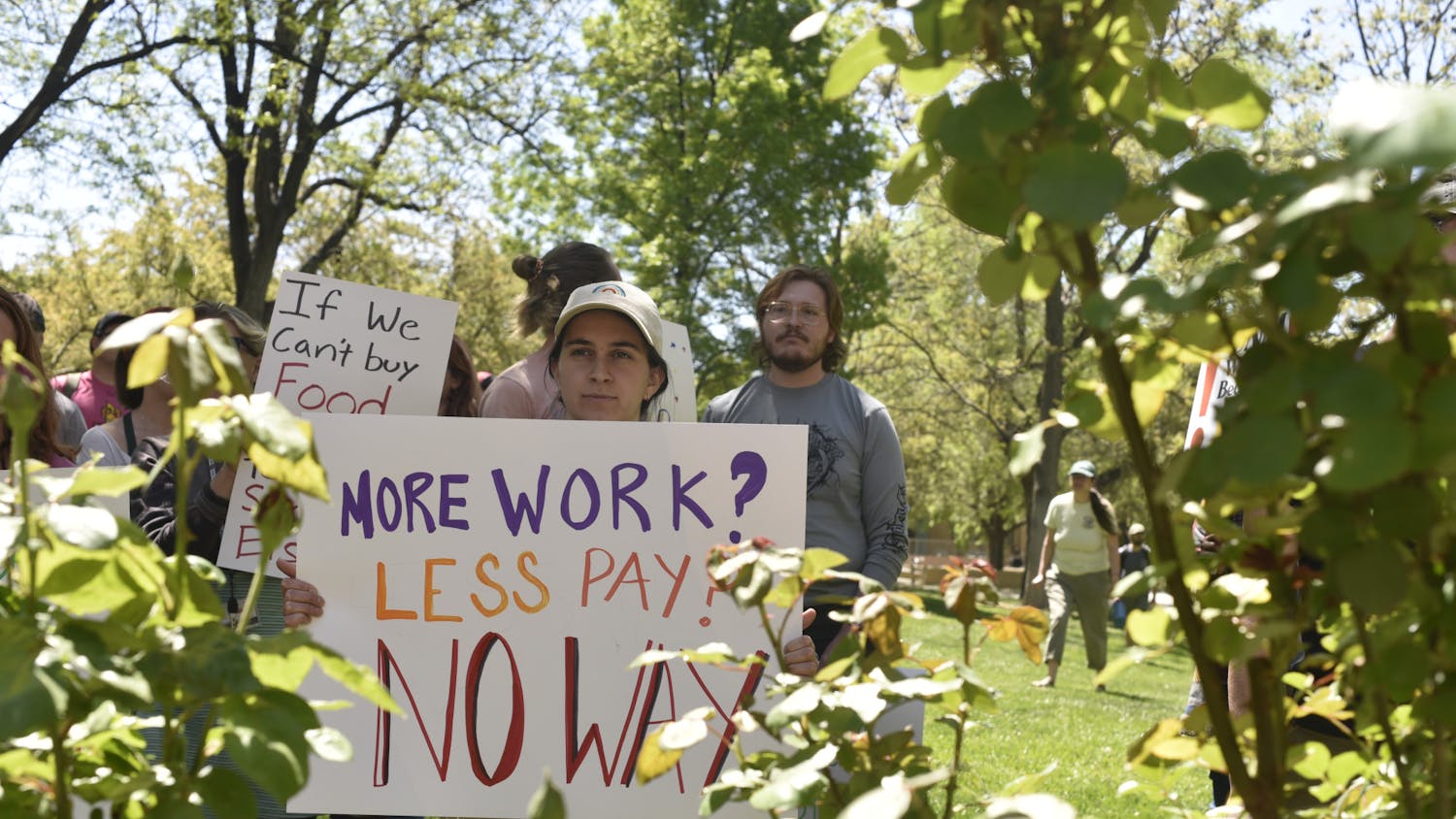The Navajo Nation has struggled for years to keep uranium mining off its lands.
However, with two leading presidential candidates now supporting the expansion of nuclear energy, American Indians may soon lose the power to decide who uses their land and its resources.
Community members considered the controversies surrounding uranium mining in the Navajo Nation last week, as guest lecturer Traci Voyles spoke about her research on the topic.
The Office of the State Historian's Scholars Program invited Voyles, who is a graduate student at the University of California at San Diego.
She said past uranium mining on Navajo land in New Mexico is an example of environmental racism, a topic she teaches courses on at UCSD.
Uranium mining has negatively effected the Navajo population, Voyles said. The pueblos near Gallup and Crown Point have seen an increase in respiratory health problems and other diseases related to mining, she said.
Get content from The Daily Lobo delivered to your inbox
The Navajo Nation placed a ban on uranium mining and milling on its lands in 2005, but Dina Gilio, co-chairwoman of the Native American Studies program, said the ban may be lifted if the government decides to expand nuclear energy initiatives.
Voyles said the first part of her dissertation focuses on the historical aspect of environmental racism and colonialism and the history of the federal government's involvement in these problems. She will also investigate how native groups are facing these issues later in her project.
"The movement that is going on for environmental justice is also being a movement for indigenous sovereignty," she said.
Gilio said she has studied the issue of uranium mining in New Mexico and has seen the environmental racism trends in the Southwest.
"I think environmental racism would affect New Mexicans the same way it affects communities across the country in that within poor communities, their voices don't get heard," Gilio said.
There are massive uranium deposits in New Mexico, and in the '50s there was a push to start mining on Navajo land, she said.
Mining companies came to Navajo lands and told people the mines would bring jobs and add to the strength of native economies, Gilio said.
However, the companies didn't warn people about the impacts of uranium mining, she said.
"What ended up happening was that hundreds of people have died in the Navajo community," she said. "So many Navajos died as a result from contamination."
Uranium contamination also came from the depleted mines that were left open on Navajo land, Gilio said.
"They have never been cleaned up," she said. "They are open wounds in the ground."
To date, there are 1,300 depleted uranium mines on Navajo land, Gilio said.
She said uranium contamination is also a serious issue because uranium particles can be carried by the wind, causing problems far away from mining sites.
"There was a huge accident that happened in the '70s or '80s where Rio Puerco got contaminated with uranium, and it made a whole lot of people sick down the stream,"
Gilio said.
Chemical Nuclear Engineering graduate student Allison Barber said in an e-mail that the risks of uranium mining were seen early in the technology's history but that improvements have been made since then.
Early on, workers developed small cell carcinoma because of the extensive exposure to uranium and inadequate ventilation systems, Barber said.
"As the United States has gained more understanding of the mining of uranium, the implementation of safe practices ensures the health of the workers," she said.
Barber said there are benefits to uranium mining and that uranium is a valued energy source around the world.
"We need to mine uranium for reactor fuel, as well as testing," she said. "Currently, the United States gets 20 percent of its power from reactors, while other countries like France get almost 80 percent of its power from nuclear power plants."
Voyles said the federal government is considering using nuclear power as a clean energy source but that it may not be the best choice.
"There is a lot of debate among environmentalists even about whether or not nuclear power could be a green technology," she said.





